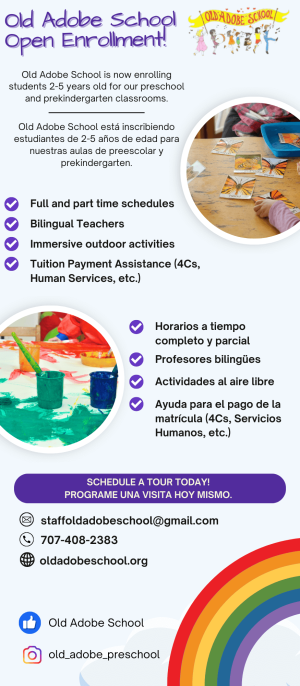 Dr. B.J. Bischoff is the owner of Bischoff Performance Improvement Consulting, a Sonoma firm specializing in building the capacity of nonprofit organizations and public sector agencies to better serve their stakeholders. She assists her clients with strategic planning, training resulting in performance improvement, fund development, and community relations. She is Past President of Impact100 Sonoma and serves as a Sonoma County Board of Supervisors’ appointee to the Sonoma County Portfolio of Model Upstream Programs Review Committee. Contact her at [email protected].
Dr. B.J. Bischoff is the owner of Bischoff Performance Improvement Consulting, a Sonoma firm specializing in building the capacity of nonprofit organizations and public sector agencies to better serve their stakeholders. She assists her clients with strategic planning, training resulting in performance improvement, fund development, and community relations. She is Past President of Impact100 Sonoma and serves as a Sonoma County Board of Supervisors’ appointee to the Sonoma County Portfolio of Model Upstream Programs Review Committee. Contact her at [email protected].
Why nonprofits need a technology plan
Foundations that award grants to nonprofits for the purpose of upgrading their technology have started asking organizations to also submit a technology plan. Since very few nonprofits in Sonoma Valley have an actual technology plan, a best practice in nonprofit management, the time might be right for the leadership of our local organizations to consider developing a plan to guide the organization’s strategic use of technology that’s aligned with its annual technology budget.
Like any other type of strategic planning, strategic technology planning allows an organization’s staff and volunteer leadership to take a comprehensive look at the current state of how technology is being used and the desired future state for how technology can increase the organization’s impact in the community. Examples of how technology can support an organization’s achievement of its mission include the following: (1) serve more individuals and families; (2) increase productivity through streamlined operations; (3) improve engagement with donors and volunteers; (4) use data to make better mission-centric decisions; (5) strengthen both internal and external communications; and (6) improve the quality and impact of programs.
Most Sonoma Valley nonprofits are relatively small and struggle to effectively use technology. They frequently have a variety of mis-matched, outdated computers that were donated to them by community members who purchased new computers and no longer needed their old hardware. They have little to no staff with technology expertise and minimal technology use policies. They lack funding for capital expenditures like new equipment or databases. And they often face organizational leadership that views investments in technology as unnecessary overhead costs that could be better invested in direct services and programs.
So, what does a technology plan include and how do charitable organizations embark on developing one?
The best way to get started is to select a designated technology planning champion. This champion could be a staff member or a dedicated volunteer, but doesn’t have to be a technology expert. The champion’s role is to bring the right people together to form a technology planning team of staff and volunteers and to move the process forward so that the plan becomes a reality. For the planning process to be successful, it’s critical for the leadership of the organization to support the champion and the team’s work. The team starts by determining how technology is already supporting the organization’s mission, identifying the needs the organization has that can be better supported through technology, and assessing the current state of the organization’s technology. After this assessment is complete, the team prioritizes the needs, identifies possible solutions, then develops a plan to match the organization’s needs with technology resources. The organization’s leadership adopts the plan and the plan is implemented, monitored, and updated, as needed. As part of developing a technology plan, many organizations choose to develop a technology strategy that guides the implementation of the plan. A technology strategy describes the organization’s philosophy for how technology will help the organization achieve its mission.
A comprehensive technology plan, often a three-year plan, usually contains the following elements: (1) introduction that describes the organization’s services and programs, description of client/member base, plans for agency growth, and mission; (2) major technology initiatives the organization hopes to implement, in order of importance; (3) detailed information on the status and inventory of the organization’s technology infrastructure (networks, work stations, peripherals, operating systems) and description of what needs to be upgraded, purchased, and modified; (3) current status of technical support and required changes to support current and upgraded technology; (4) current level of technology skills of staff members and technology training needed to improve staff skills; (5) programs and procedures currently used to manage data and necessary changes or new programs to better collect and manage data; (6) current status of communication programs in use (website, phones, email, social media, email marketing, etc.) and changes required to improve communications; (7) sustainable practices that will be employed, such as preventive maintenance, support/helpdesk activities, equipment recycling, and proactive replacement funding; (8) vendor relationship management; (9) timeline for implementing the plan; and (10) technology budget reflecting capital expenditures, consumables, license/subscription/user fees, and contracted technology services .
Although developing a technology plan for the first time may be time-consuming and laborious, the more integrated it becomes with other organizational planning efforts, the simpler it will be to keep the plan updated and the more likely it is that technology planning will become just another regular business practice. Plus, the next time you wish to apply for certain foundation funding for upgraded computer equipment, you will be more competitive because you’ll be able to state with confidence that your technology plan is in place.
B.J. Bischoff is the owner of Bischoff Performance Improvement Consulting, a Sonoma firm specializing in building the capacity of nonprofit organizations and public sector agencies. She assists her clients with strategic planning, board and staff training, fund development, grant writing, and community relations. She is Past President of Impact100 Sonoma and serves as a Sonoma County Board of Supervisors’ appointee to the Sonoma County Portfolio of Model Upstream Programs Review Committee. Contact her at [email protected].






